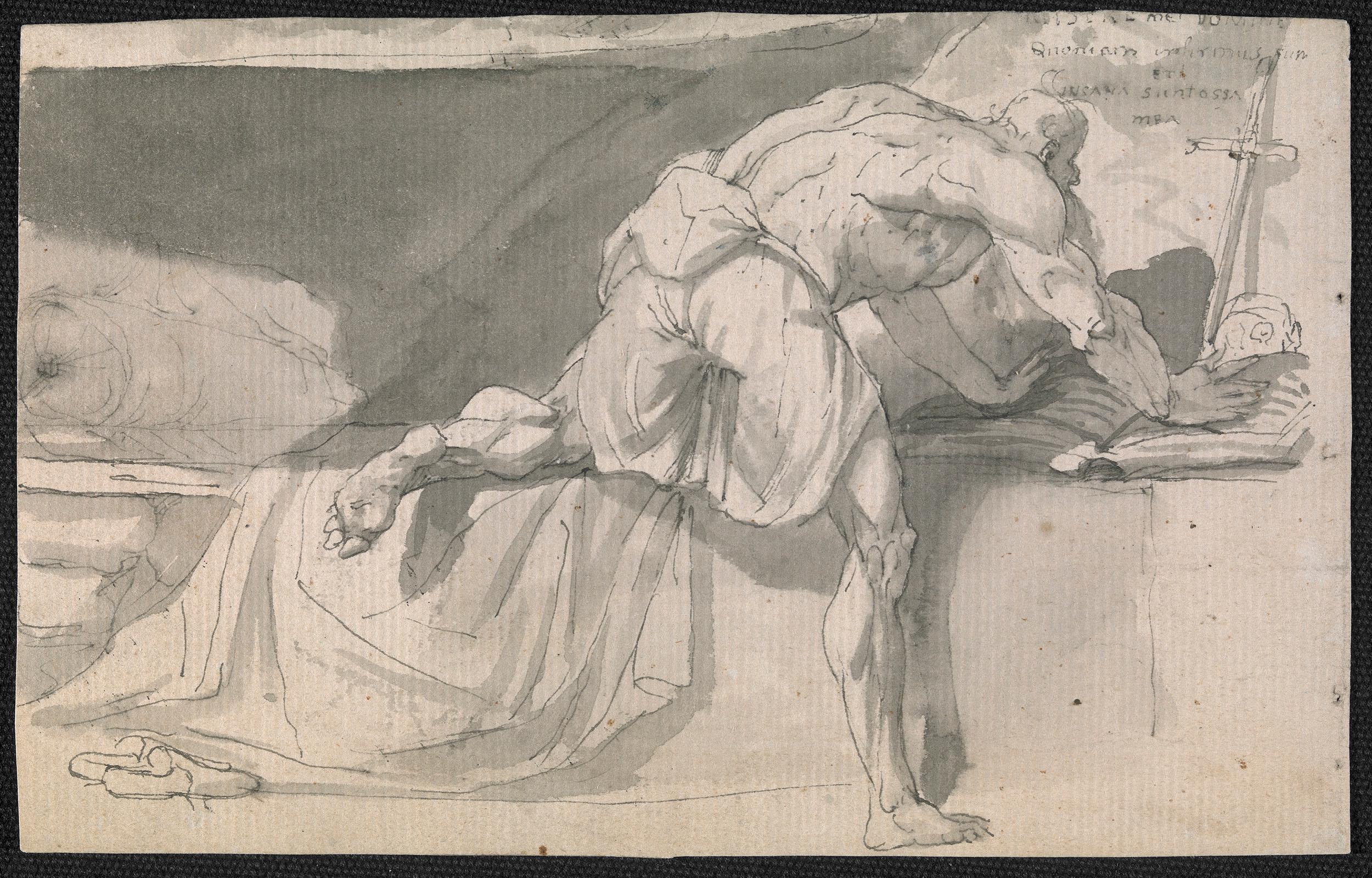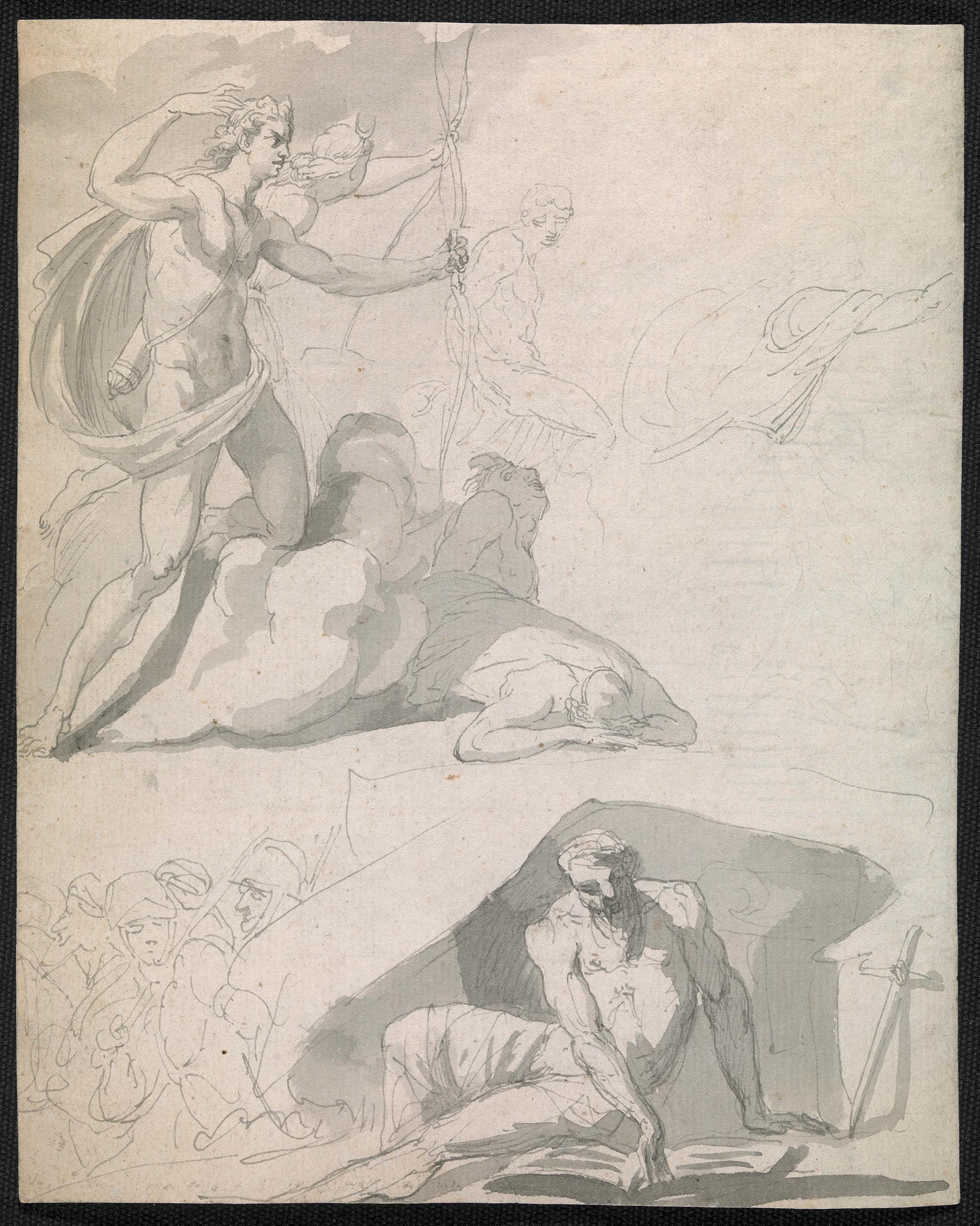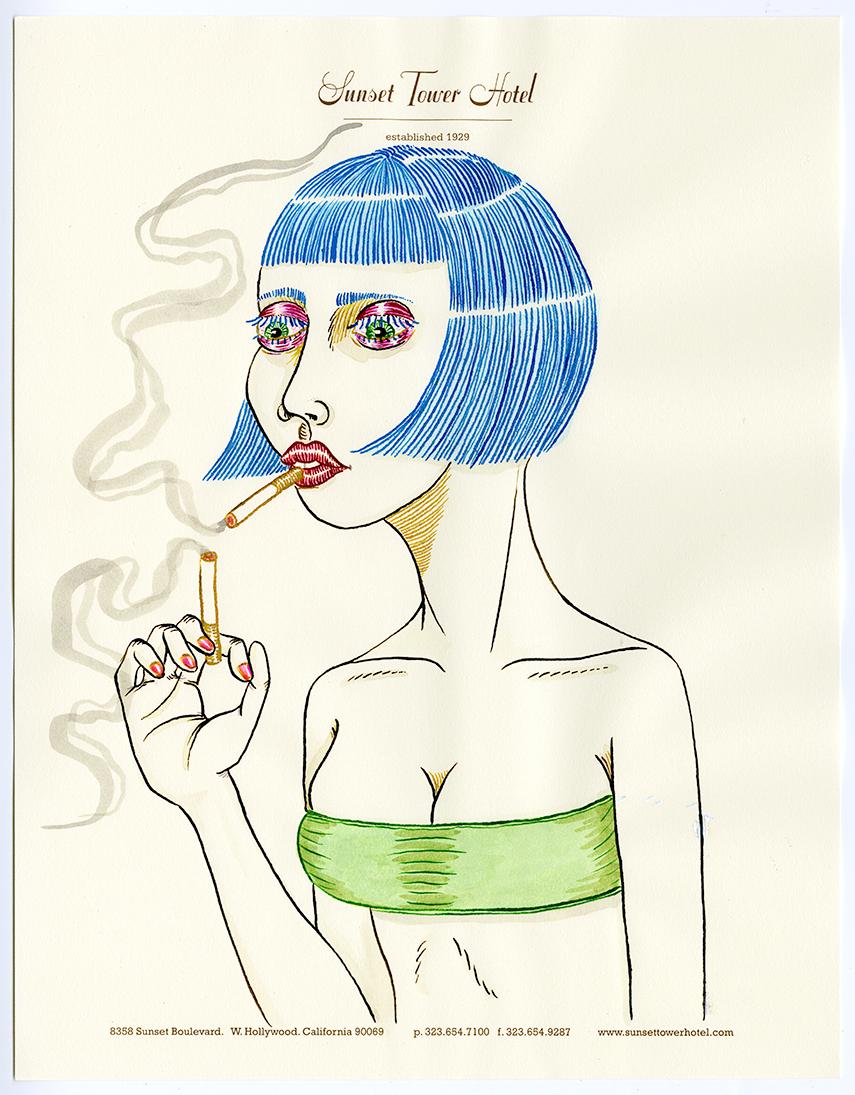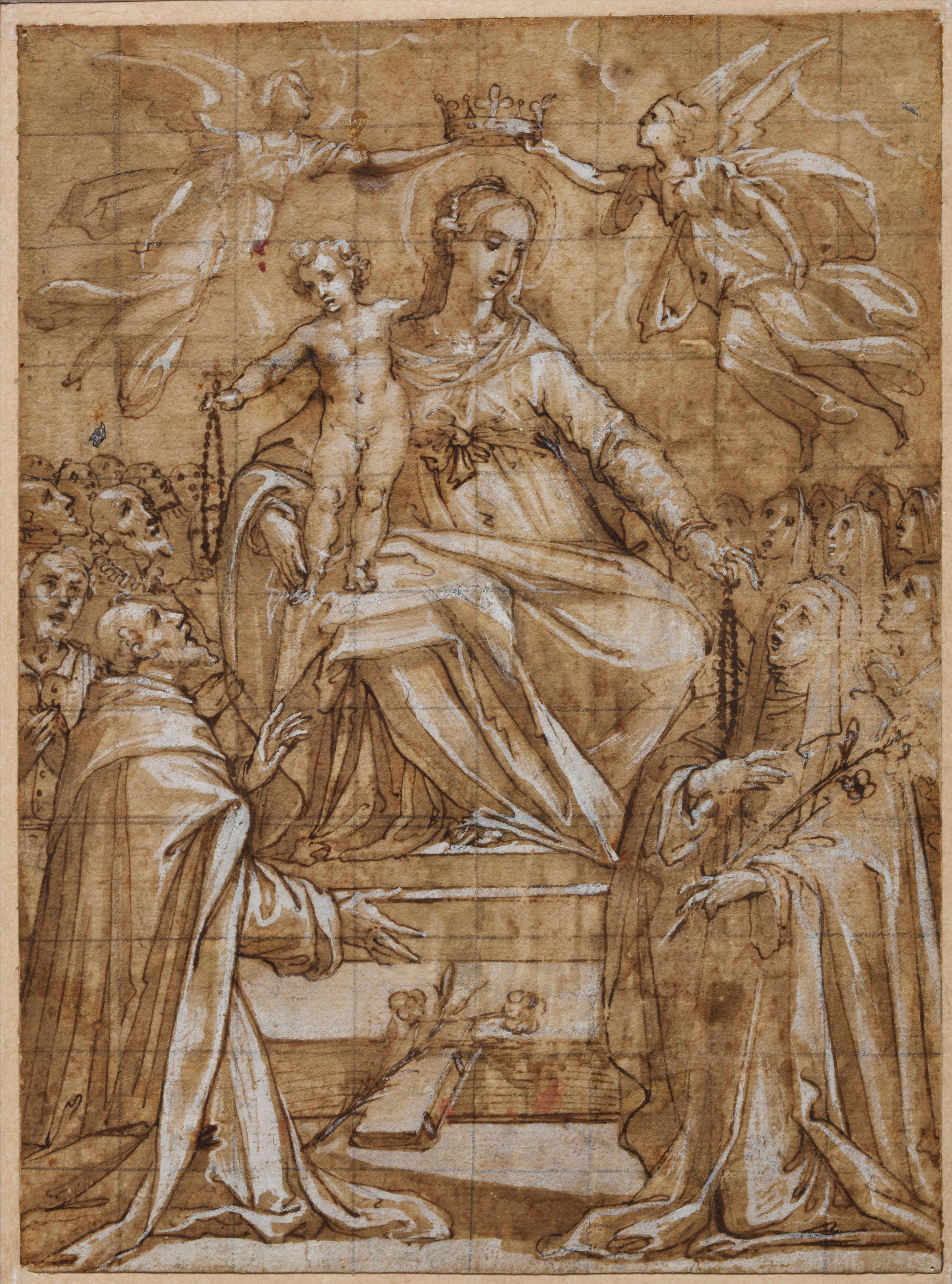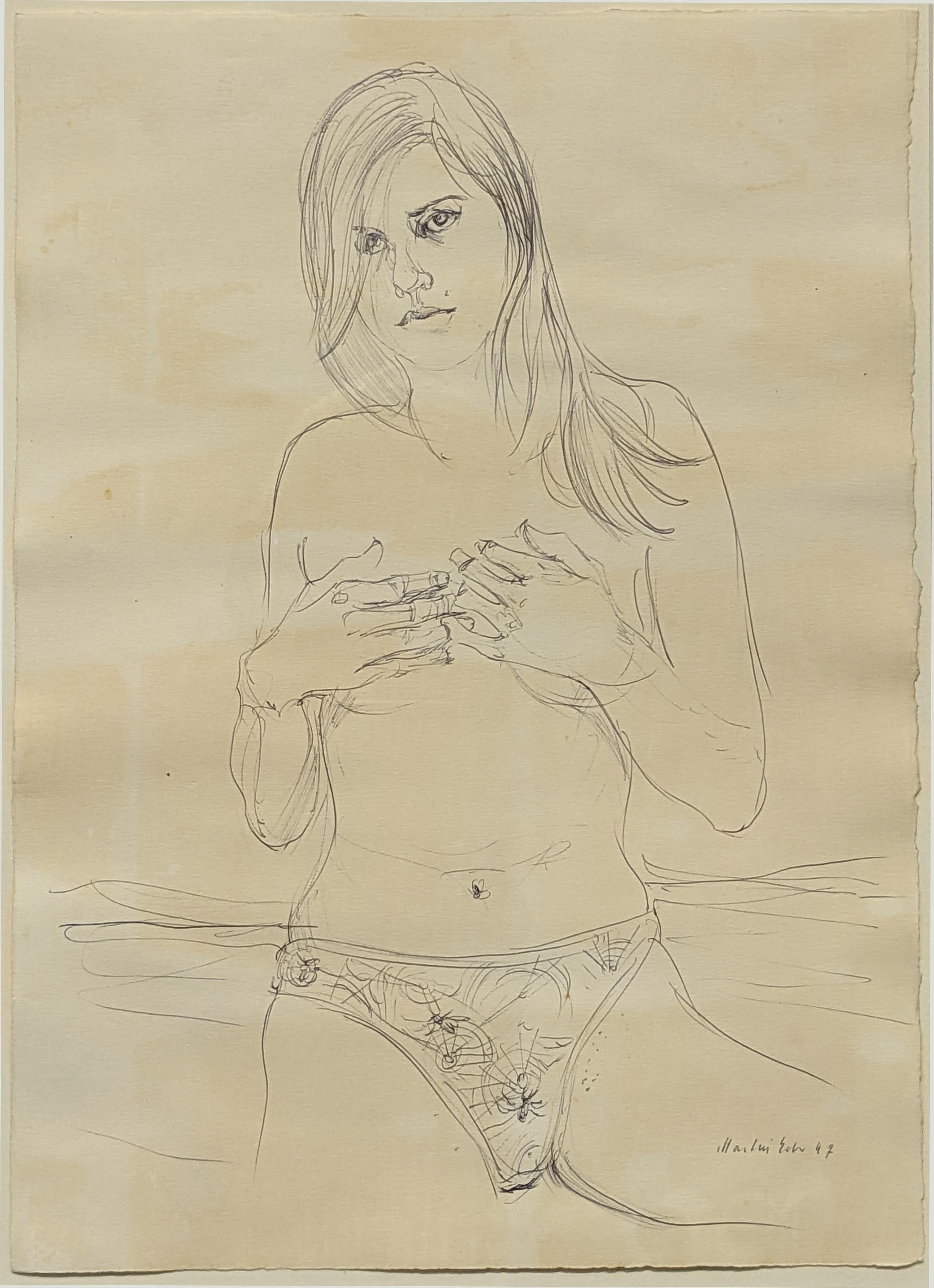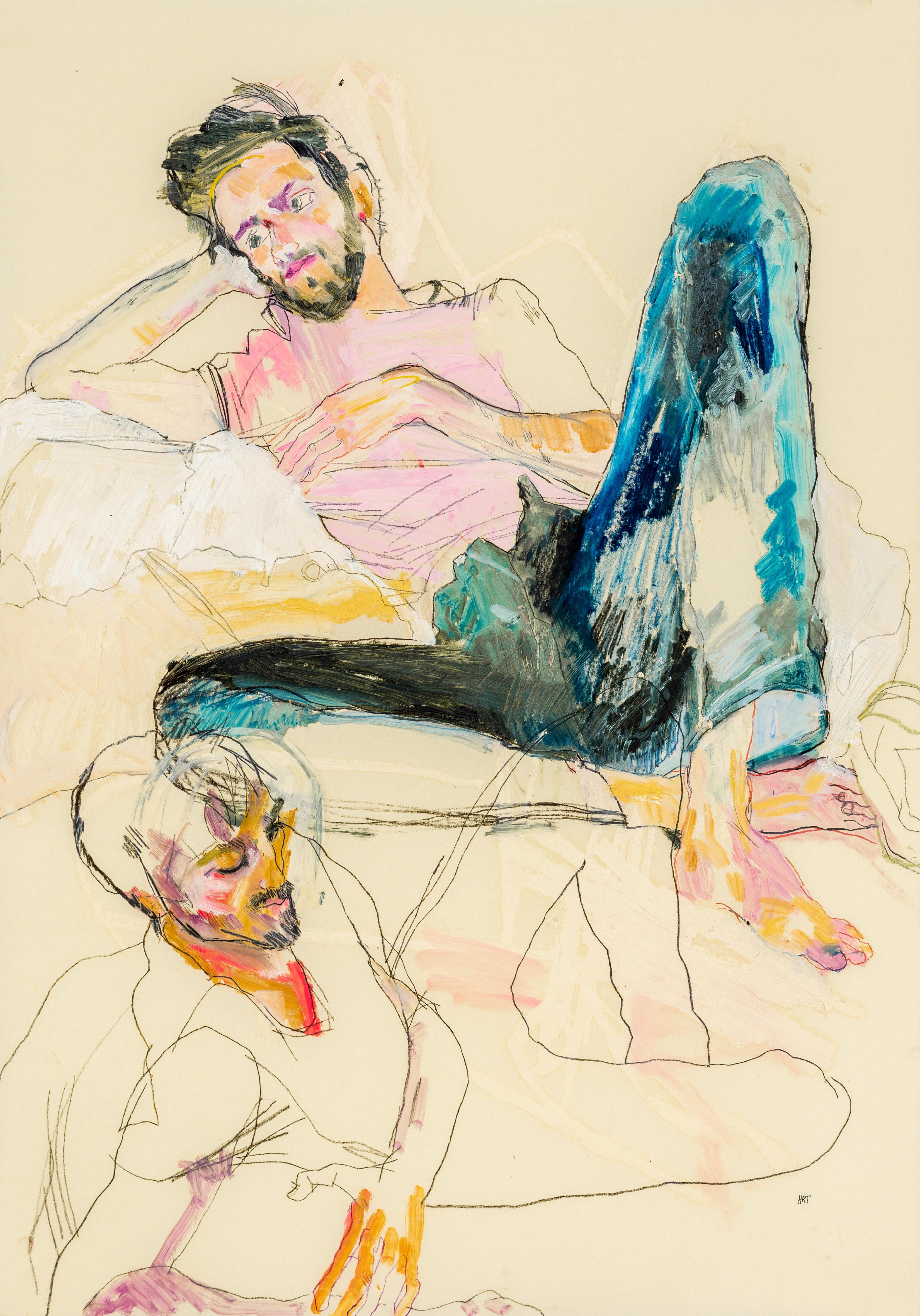Items Similar to Salomon Guillaume Counis (1785-1859) - 19th Century Pen & Ink, The Puppeteer
Want more images or videos?
Request additional images or videos from the seller
1 of 9
UnknownSalomon Guillaume Counis (1785-1859) - 19th Century Pen & Ink, The Puppeteer19th Century
19th Century
About the Item
A sketch by Salomon Guillaume Counis (1785-1859)depicting a pretty young girl being propositioned by a rogue looking young man. Finished with white gouache. Inscribed in French the the lower edge "vila ce que c'est un homme" or "what a man he is". Well presented in a simple silver gilt frame. Signed. On paper.
- Creation Year:19th Century
- Dimensions:Height: 15.56 in (39.5 cm)Width: 13.78 in (35 cm)
- Medium:
- Period:
- Condition:The condition is typical for a picture of this age including some discolouration. Some minor scuffs to the frame.
- Gallery Location:Corsham, GB
- Reference Number:
About the Seller
4.9
Platinum Seller
These expertly vetted sellers are 1stDibs' most experienced sellers and are rated highest by our customers.
Established in 2010
1stDibs seller since 2018
854 sales on 1stDibs
Typical response time: 6 hours
- ShippingRetrieving quote...Ships From: Corsham, United Kingdom
- Return PolicyA return for this item may be initiated within 30 days of delivery.
More From This SellerView All
- Attrib. Gordon Browne RI, RBA (1858-1932) - c.1913 Pen & Ink Drawing, Mr. CraigLocated in Corsham, GBA pen and ink drawing attributed to the well known British artist Gordon Frederick Browne. Label to the reverse reads 'Gordon Frederick Browne RI, RB (1858-1932) Son of 'Phiz'. Exhib...Category
20th Century Figurative Drawings and Watercolors
MaterialsPen
- Alfred Reginald Thomson RA (1895-1979) - 1936 Pen Drawing, The Artist's JourneyLocated in Corsham, GBA humorous illustration by the British artist Alfred Reginald Thomson. Drawn on wove and laid to thick card. Signed and dated.Category
20th Century Figurative Drawings and Watercolors
MaterialsPen
- Alfred Reginald Thomson RA (1895-1979) - 1929 Pen Drawing, Three AcademiciansLocated in Corsham, GBA humorous illustration by the British artist Alfred Reginald Thomson, entitled 'A Story of Three Royal Academicians'. Thomson has depicted three gentlemen enjoying a drink at a bar...Category
20th Century Figurative Drawings and Watercolors
MaterialsPen
- Harold Hope Read (1881-1959) - Signed Pen and Ink Drawing, Society BallBy Harold Hope ReadLocated in Corsham, GBA highly detailed and characterful study of high society figures in a grand interior. Laid to backing paper with a hand drawn border. Signed. On wove.Category
20th Century Figurative Drawings and Watercolors
MaterialsPen
- Harold Hope Read (1881-1959) - Framed Pen and Ink Drawing, Society NightlifeBy Harold Hope ReadLocated in Corsham, GBSulis Fine Art is proud to present a large collection of works on paper by the highly acclaimed early 20th century British artist H...Category
Early 20th Century Impressionist Figurative Drawings and Watercolors
MaterialsWatercolor, Pen, Ink
- John Strevens (1902-1990) - Mid 20th Century Pen and Ink Drawing, At the RacesBy John StrevensLocated in Corsham, GBA wonderful illustrative study by the British artist John Strevens. Depicting an Edwardian couple enjoying a day at the races. With waterclour wash....Category
20th Century Figurative Drawings and Watercolors
MaterialsPen
You May Also Like
- Eighteenth century Old Master drawing - St JeromeBy John Hamilton MortimerLocated in London, GBPen, ink and wash Framed dimensions: 9 ½ x 11 ¼ inches Drawn c. 1763 This small, powerful study shows St Jerome contemplating the bible with a cross and sk...Category
18th Century Old Masters Figurative Drawings and Watercolors
MaterialsInk, Pen
- Eighteenth century Old Master drawing - Apollo destroying Niobe's childrenBy John Hamilton MortimerLocated in London, GBPen, ink and wash Framed dimensions: 13 x 11 ¼ inches Drawn c.1765 Verso: a study of a hanged man Mortimer has filled this small sheet with action, depicting in the top right, Apollo and Artemis...Category
18th Century Old Masters Figurative Drawings and Watercolors
MaterialsInk, Pen
- Untitled (Sunset Tower Hotel)By Ed TempletonLocated in New York, NYListing includes framing with UV plexi, free shipping and a 14 day return policy. Ed Templeton Untitled (Sunset Tower Hotel), 2019 Image size: 11 ...Category
2010s Contemporary Portrait Drawings and Watercolors
MaterialsAcrylic, Ballpoint Pen, Pencil, Color Pencil
- Modello for the Virgin of the Rosary, a drawing by Francesco Vanni (1563 - 1610)Located in PARIS, FRFrancesco Vanni is one of the last representatives of the long Sienese pictorial tradition. In this masterly composition in pen and ink wash, he presents the Virgin of the Rosary, holding the Child Jesus on her lap, surrounded on her right by Saint Dominic and on her left by Saint Catherine of Siena. The presence of these two emblematic saints of the Dominican order is a reminder of the devotion of this order to the Rosary. 1. Francesco Vanni, a Sienese painter of the Counter-Reformation Francesco Vanni was the most important Sienese painter of the late sixteenth century and a key Italian Counter-Reformation painter. He developed a very specific style, inspired not by Florentine models but rather by the Roman, Bolognese and Marche schools, and in particular by the work of his contemporary Federico Barocci (Urbino 1535 - 1612), despite the two artists never meeting. Francesco Vanni was born in Siena around 1563-1564. His father died in 1567 and his mother remarried Arcangelo Salimbeni (1536 - 1579), then one of Siena’s leading painters. His half-brother Ventura Salembini (1568 - 1613) also became a well-known painter. He continued his apprenticeship in Bologna and Rome, where he joined the painter Giovanni de Vecchi’s (1536 - 1614) studio, where he was greatly influenced, like other Tuscan painters of the time, by the art of Federico Barocci. He devoted himself mainly to religious painting, following the canons of the Counter-Reformation. Travelling between Siena, Rome, Bologna and Parma, in 1604, he settled in Siena, where he ended his life. Vanni was also an important member of the Confraternity of the Sacro Chiodo, renowned for its demanding religious practices. His legacy also includes some important engraved work. 2. Description of the artwork The Virgin is depicted enthroned in majesty, slightly taller than the other figures that she dominates from her pedestal. Her wide robe with marked folds evokes Renaissance statuary. She is crowned by two angels in the sky. These two angels are a reminder of the custom of adding angels to crown 13th century icons which was frequent at Vanni’s time. The Child Jesus is standing on the Virgin’s right knee. With her left hand she holds out a rosary to Catherine of Siena, identifiable by a branch of lily in her hand. In a symmetrical gesture, the Child Jesus also holds out a rosary to St Dominic. Two of St Dominic’s attributes are to be found at the foot of the Virgin: a book and a branch of lilies. Vanni gives particularly delicate treatment to St. Dominic's long and slender hands. The two outstretched rosaries form the link between the heavenly register of the Virgin and the Child Jesus and the earthly register of the two Dominicans who are not crowned with a halo. This and the fact they are followed by a large crowd, indicates that they are both represented as part of the multitude of the living called to pray to the Rosary. According to the classical iconographic tradition, it would be plausible to consider that the figure looking at the viewer on the extreme left of the drawing could be a self-portrait of the painter. Francesco Vanni's face is known to us from a self-portrait kept in the Pinacoteca Nazionale in Siena. The squaring of the drawing suggests that it was used for a larger-scale altarpiece, probably for a church dedicated to St Dominic or for a Dominican convent. As of today, we have not identified the painting for which this drawing served as a preparatory modello. The Madonna of the Rosary in the Cathedral of Pitigliano (painted by Francesco Vanni in 1609) differs quite significantly from our drawing by the addition of Pope Pius V, and the inclusion of St. Dominic and St. Catherine in the celestial register. We believe that our drawing predates this painting because of its more symmetrical composition, and less Baroque influence. The presence of Saint Catherine of Siena, particularly venerated in his native town, to which Francesco Vanni returned frequently from 1590 onwards, leads us to propose a date of around 1590 - 1600 for this drawing. 3. The Rosary and the Dominican Order In order to clarify the iconographic meaning of this artwork, it is worth recalling the role of Saint Dominic in the spread of the Rosary prayer. Dominic Nuñez de Guzman was born around 1170 in Caleruega (near Burgos) in Spain and died in 1221 in Bologna, Italy. He was the founder of the order of friar preachers, commonly known as the Dominicans. He was canonised by the Church in 1234 and has since been celebrated under the name of Saint Dominic. After three days of prayer in the forest of Bouconne, near Toulouse, Dominic is said to have received the Rosary as a means of converting the Cathar population. The Dominicans subsequently made a special effort to promote this form of meditative prayer. Pope Pius V, a Dominican, included the feast of the Rosary (on October 7th) in the liturgical calendar in 1571. Rosary prayer has evolved over the centuries and traditionally consists of the recitation of three rosaries (four since St John Paul II). Each rosary consists of five tens of "Hail Mary...Category
16th Century Old Masters Figurative Drawings and Watercolors
MaterialsPen, Ink
- untitled / ohne TitelBy Martin EderLocated in New York, NYMartin Eder untitled work on paper executed in ballpoint pen with traces of watercolor. Ohne Titel Arbeit auf Papier, ausgeführt in Kugelschreiber mit Spuren von Aquarell. 2007Category
Early 2000s Realist Nude Drawings and Watercolors
MaterialsInk, Watercolor, Pen
- Oleg (Kimono), Mixed media on ochre parchment paperBy Howard TangyeLocated in London, GBHoward Tangye (b.1948, Australia) has been an influential force in fashion for decades. Lecturing at London’s Central Saint Martins for 35 years, including 16 years as head of BA Wom...Category
2010s Contemporary Figurative Drawings and Watercolors
MaterialsPaint, Paper, Parchment Paper, Charcoal, Crayon, Oil Crayon, Oil Pastel,...
Recently Viewed
View AllMore Ways To Browse
Choctaw Native American
Blue Dog Auction
Carl Von Marr
On The Beach 1930s Crayon On Paper
Marjorie Organ
Preservation Hall New Orleans
Pearl Ting
Ronald A Broad
Simon Pietersz Verelst
Steiner Chromatic
Antique Gun Dog Painting
E15 Arie
Frank Schott Blue Hour
George Booz
Halong Bay
Hans Peter Wilhelm Arp
How Remove Image From Recently Viewed
Jean Jacques Delaverriere
